- About Us
- Columns
- Letters
- Cartoons
- The Udder Limits
- Archives
- Ezy Reading Archive
- 2024 Cud Archives
- 2023 Cud Archives
- 2022 Cud Archives
- 2021 Cud Archives
- 2020 Cud Archives
- 2015-2019
- 2010-2014
- 2004-2009
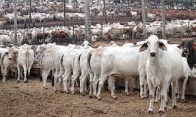 |
August 2011 - Live Exports Keeping Top End Australian Families Fed |
Why aren’t there any Abattoirs in Northern Australia?
There are no laws stopping an abattoir being established in northern Australia, yet there are none north of a line from Perth to Townsville.
If anyone could find a way to run a profitable and sustainable abattoir in the Top End, then there would be one there already. Many have tried to find a way to operate a sustainable, profitable abattoir in the Top End and all have failed for a variety of reasons.
Without a significant long term taxpayer investment into a number of abattoirs capable of killing at least four hundred cattle a day, an abattoir would struggle to operate commercially in northern Australia.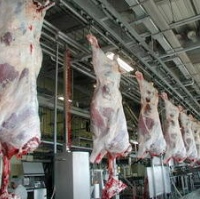
The two biggest issues in establishing an abattoir in Northern Australia are reliability of a steady continuous year round supply of cattle and labour. Despite having both in abundance, Australia’s largest meat processor, ‘Beef City’ at Toowoomba, closed recently for at least two weeks or maybe longer because it could not sell the beef it had already processed due to the Japanese earthquake and the high Australian dollar. Chilled and box beef markets are not easy to secure and are hard to keep.
If the live export industry is banned, the Northern Australian beef industry will grind to a halt and many enterprises will go into liquidation.
Labour Shortages means Abattoir workers would have to be imported from the Philippines, Indonesia, or Vietnam
The skilled labour shortage in Australia is hitting the meat processing sector harder than most. Abattoirs cannot compete with the mining industry on wages.
The chairman of one of Australia’s largest beef processors, Allan Teys, has said the “Lack of skilled labour in abattoirs remains a significant and limiting factor to utilising available processing capacity, and producers need to understand that this also then reflects on the livestock prices they receive.”
In an attempt to fill the labour shortages, Australia’s meat processors have been forced to beg the government to allow them to import workers from overseas to work.
The ABC's 7.30 Report ran a story that stated; “A shortage of workers has forced a goat abattoir in Charleville in south-west Queensland to close. The owners say that they can't get enough workers to keep production going and need foreign workers to be brought in.” According to the ABC the Charleville goat abattoir was the ‘biggest in the world, generating tens of millions in exports every year.’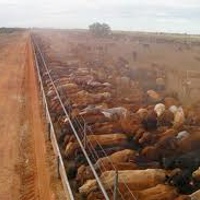
The North Australia Beef Research Council reports on its website that the March 2011 meeting highlights included a group trip to Nolans' processing works at Gympie to gain an insight into the processing side of the Beef chain.
According to the report, “sourcing enough staff for the operation is a problem which is typical of meatworks, but the arrival of 457 visa workers from Brazil has stabilised the workforce somewhat. ...Vietnamese slaughtermen employed at the plant carry out the halal killing.”
If an abattoir located in South-east Queensland with a population of 3 million people within a two hour drive is forced to import workers from Brazil and Vietnam, how would a new abattoir located at Port Hedland the epicentre of Australia’s mining boom, with a population of around 16,000 find 200 skilled staff needed to run the abattoir?
The abattoir would also be competing against the salaries paid by the mining industry that in 2009/10 shipped $20.4 billion worth of iron ore from Port Hedland. On the 25th of July 2011 the Australian newspaper reported that in mining towns in Western Australia ‘short-order cooks are being paid $140,000 a year for "flipping burgers".' The average salary for a skilled slaughtermen in Australia is around $50,000 per annum.
Reliability of Supply
In order for an abattoir to be sustainable, it must operate at or near capacity for twelve months a year.
Unless there is a multi-billion dollar investment into roads, bridges, culverts, feedlots and associated infrastructure across northern Australia, it would be impossible to deliver the annual turn-off of cattle year round to the abattoirs. This is because of the wet season.
The wet season is unpredictable and cattle stations and communities can be isolated and cut off from major centres for more than six months a year or longer in a record wet season like the one that recently saw a Category Five Cyclone batter Northern Australia . It was but one of 11 which hit this year (one less than average), causing extensive damage to infrastructure across the Top End.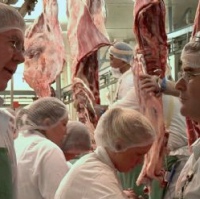
It would be impossible and unfair to employ skilled staff for a few months a year and then sack them. We look after our workers, and will not disrespect people with job prospects like that.
One of the key findings of a study looking at establishing meat processing facilities in the Western Australian Rangelands funded by the Federal and Western Australian Governments and released in November 2010 was that, ‘In strictly commercial terms, it is unlikely that a new facility will be viable at any location in the subject area, as the returns on capital are unlikely to be high enough to warrant the risks involved.’
Increased Transport Costs will Make Cattle Stations Unviable
Because there are no export abattoirs in northern Australia, cattle would have to be trucked thousands of kilometres to southern abattoirs to be processed. In Western Australia, for example, there are only three export beef processors; all located in the far southwest of the state that are relatively small compared to the major national players. There are another four southern meatworks supplying the domestic market only. There are none capable of processing the cattle that need to be turned off each year in Northern Australia.
As a direct result of the ever increasing cost of living, Global Financial Crisis, regulatory burden, high Australian dollar, tariffs/quotas and proposed and existing tax increases (carbon tax and AQIS fees); operating margins for everyone in the cattle industry are already wafer thin. Coupled with the increased transport costs given there is no option but to send cattle to existing abattoirs thousands of kilometres away, beef production in northern Australia becomes unviable.
Because of the limited processing capacity in Western Australia and a small window of opportunity for cattle to be sent into Southern WA from the North because of the hot season (where for animal welfare reasons property owners will not muster cattle) and the wet season (roads are impassable and cyclones damage infrastructure), the number of cattle being sold during the short time they can be physically moved off the northern stations, they will flood the market for Bos Indicus type cattle driving down prices.
The bulk of the Australia’s abattoirs are located in southern Queensland, New South Wales and Victoria, and the cost of sending a yearling steer from the Pilbara or the Northern Territory to the eastern seaboard would be over $200 /steer.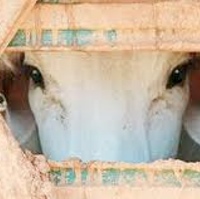
The transport costs alone mean no cattle farmer in northern Australia will receive a fair day's pay for a hard day’s work, if the live trade is not resumed.
International Market Access
Australia’s boxed and chilled export markets could not handle all of northern Australian cattle turned-off each year without severely impacting on profitability for cattle producers across Australia. This is because of a number of factors.
The cattle that are produced in northern Australia are in the main Bos Indicus or Brahman type cattle, not the European breeds predominant in the Southern States, which are bred specifically for the high value markets. European type breeds such as Herefords or ‘the little bit fancy’ Angus do not do well in the tropics.
The cattle that are bred in the north aren’t usually suitable for the high value markets like Japan and South Korea, and would be more suited to the hamburger mince (ground beef) markets, which are already well serviced by southern cattle producers whose older animals currently go into this market. Our largest market for ground beef is the United States.
Indonesia has been imposing import quotas on chilled/box beef from Australia, however our quota has been under threat because of Indonesia’s desire to be self sufficient in beef production. The market is currently being serviced by southern abattoirs and because of the import quotas, the lack of cold storage from the wharves to the plate, cultural reasons (such as Indonesian’s do not trust meat on health grounds which was not killed within the previous twenty four hours), fears of reprisals by the Indonesian Government over the live export suspension and the aggressive market tactics of international competitors, there is no guarantee that our live-exports will be replaced by beef processed in Australia.
Australia’s chilled/boxed beef exporters are struggling because of the high Australian dollar, the Japanese earthquake and the continued jitters in global markets.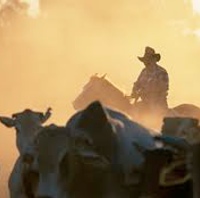
The United States has an extremely aggressive trade policy and thanks to its low dollar in comparison to the Australian dollar, it is actively targeting Australian beef markets including Indonesia, Japan and South Korea.
All Australian exporters are now being hit with a new export quarantine tax and will next year be subjected to a Carbon Tax that is and will have a major impact on already tight margins, especially when none of our major competitors are charged these types of taxes.
Nearly all of our chilled beef markets have quotas, and/or tariffs and the local product in importing countries is often subsidised. Unless there are changes to global agricultural trading rules we cannot simply sell more beef competitively into those markets because we have already used up our quotas for those markets, and either snap back tariffs or other trade sanctions are applied.
Banning the live trade will not stop animal cruelty.
The live export trade is built around a market that is not nor will convert to a box/chilled market in the medium to long term. If Australian cattle or sheep are not supplied into these markets then the animals will be sourced from other countries. Australia is just one of many countries involved in the global trade of cattle and sheep.
The Australian live export industry transports all animals with the highest animal rights welfare standards in the world.
When Australian animals have been withdrawn from markets in the Middle East, the shortages have been filled by Horn African countries, including Somalia, Ethiopia and Eritrea. There are no enforced animal welfare regulations covering the movement of these animals from other countries.
Australia is the only nation who invests in improving animal welfare standards in nations we export our animals to.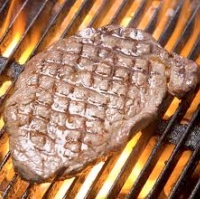 If Australians are banned from exporting live cattle, there will be no-one investing time, effort and funding in to improving the lot of all creatures great and small in countries that import live cattle. This would be a disastrous outcome for animal welfare.
If Australians are banned from exporting live cattle, there will be no-one investing time, effort and funding in to improving the lot of all creatures great and small in countries that import live cattle. This would be a disastrous outcome for animal welfare.
Already other countries are looking to fill the gap left by the suspension of the live cattle to Indonesia. The United States already imports 50,000 live cattle from Hawaii via Vancouver to Texas for fattening and slaughter each year. There is nothing stopping these animals from being redirected to Indonesia. Similarly, cattle from Foot and Mouth Disease (FMD) infected countries are being offered to the Indonesians. An FMD outbreak would cost the Australian economy over $13 billion.
Conclusion
The Animal Liberation movement in Australia are nothing more than purveyors of animal snuff movies. They do nothing practical to help improve animal welfare in countries where Australia currently exports animals too. In this day and age where people -particularly in inner city electorates in Australia- are so far removed from the food chain, the sight of blood easily shocks them. We even sanitise the news so that the real human misery (blood and guts) at a road smash or from a friendly fire incident in Afghanistan is expunged from our evening news.
Animal snuff movies, however, are allowed and nothing can make death attractive, cute or cuddly, it will continue to shock, ensuring donations and dollars keep flowing to the animal welfare industry. This is what the animal welfare lobby is banking on. They simply have no interest in actually improving the situation for all creatures great and small. They are a parasitic industry that never actually gets its hands dirty or changes the way animals are treated in developing countries.
Cattle are the lifeblood of the Top End and many families are facing a bleak future because of the suspension of the live trade with Indonesia. Systems are available to ensure animal welfare standards are met in Indonesia. Unlike animal welfare activists, the cattle industry is spending millions of dollars trying to improve animal welfare standards in countries we export to.
The live trade should and will continue. It is a legitimate industry providing real jobs and a future for families in the Top End.
Whether it iss herding cats, tracking illegal cows, winding up activists or advising Senior Government Ministers where the toilet is, Tom Chesson has seen a bit of life and hopes to see a lot more. Currently gainfully underemployed and searching for the meaning of life, two daughters under four are keeping him exasperated, exhilarated and looking for work. If he won $20 million and could live the lotto life, Tom would become a pompous twat constantly tweeting twaddle about his rock star lifestyle. Failing that, a future as a curmudgeonly old bugger beckons.
